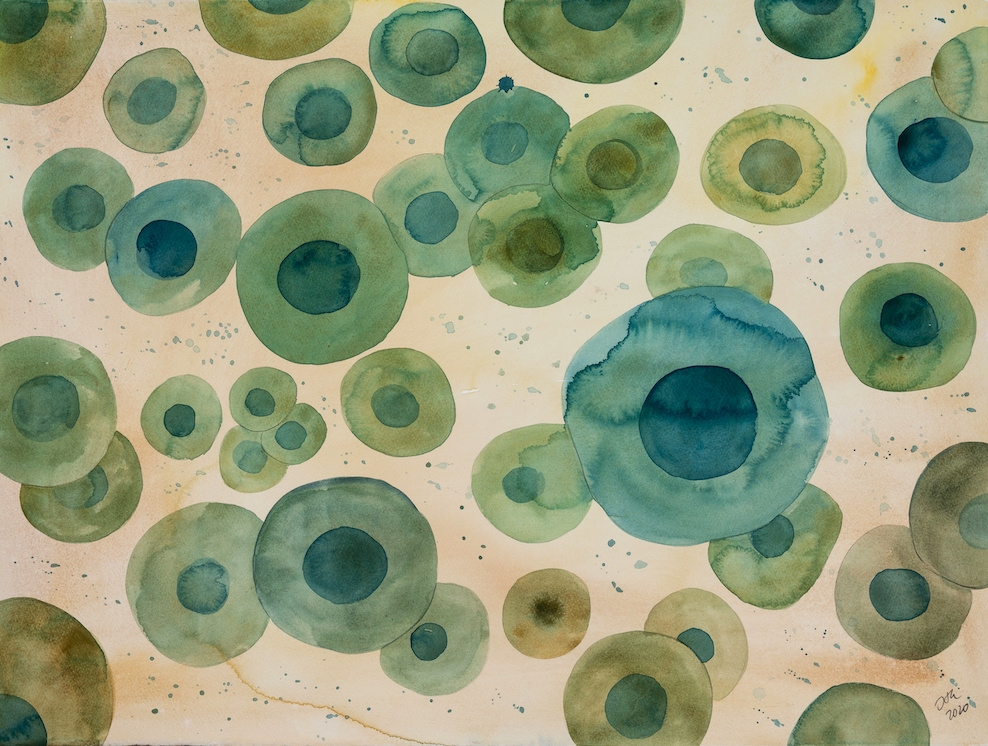Publications
Here is a selection of publications where different laminin isoforms were used to create more authentic cell culture systems.
The functions of exogenous and endogenous laminin-5 on corneal epithelial cells
Ebihara N, Mizushima H, Miyazaki K, Watanabe Y, Ikawa S, Nakayasu K, Kanai A.Exp. Eye Res., 2000
In this study, the authors investigated the functions of laminin-332 on SV-40 transfected human corneal epithelial cells (HCE cells). We also revealed different functions between exogenous and endogenous laminin-332 on HCE cells. HCE cells themselves secreted laminin-5 endogenously. Exogenously added laminin-5 strongly promoted cell adhesion via a3b1 integrin, cell spreading, assembly of hemidesmosomes, and mildly inhibited cell migration. Using an anti-laminin-5 monoclonal antibody (mAb) or anti-integrin a3b1 mAbs, the blocking of the interaction between endogenously secreted laminin-5 and HCE cells caused strong inhibition of cell migration. Integrin a3b1 and a6b4 were expressed in HCE cells. These results indicated that endogenous (unprocessed) laminin-5 has a crucial role in cell migration on HCE cells via a3b1 integrin. In conclusion, structural differences between exogenous and endogenous laminin-5 regulated their functions on HCE cells. Exogenously added laminin-5 strongly promoted cell adhesion, cell spreading, and assembly of hemidesmosomes. Endogenously secreted laminin-5 had a crucial role in cell migration.
Single-cell cloning and expansion of human-induced pluripotent stem cells by a microfluidic culture device
Matsumura T., Tatsumi K., Noda Y., Nakanishi N., Okonogi A., Hirano K., Li L., Osumi T., Tada T., Kotera H. BBRC, 2014
Validation of increased survival of single-cell hiPSC clones on LN-521 in culture and a microfluidic chip. Here the authors describe increased survival and propagation of single hiPSC clones on LN-521 in both cultures and on a new microfluidic device. By conditioning the medium they show drastically increased efficiency and represent an additional protocol to the LN-521/E-cadherin method presented in Rodin et al., 2014 for clonal growth.
Monolayer culturing and cloning of human pluripotent stem cells on laminin-521 based matrices under xeno-free and chemically defined conditions
Rodin S., Antonsson L., Hovatta O., Tryggvason K. Nature Protocols, 2014
Detailed step-by-step protocols for transfer, expansion and clonal growth of hPSCs on laminin-521. Here the authors describe predictable monolayer, xeno-free and defined culturing of hPSCs on LN-521. In the article, there is an important assembly of protocols for LN-521 based hPSC bulk expansion, true clone generation, the secure transfer step-by-step from feeders to LN-521, freezing and thawing as single cells using FREEZEstem. There are also critical steps and reagents included for easier handling of more difficult lines and a useful troubleshooting guide for solving problems faster.
